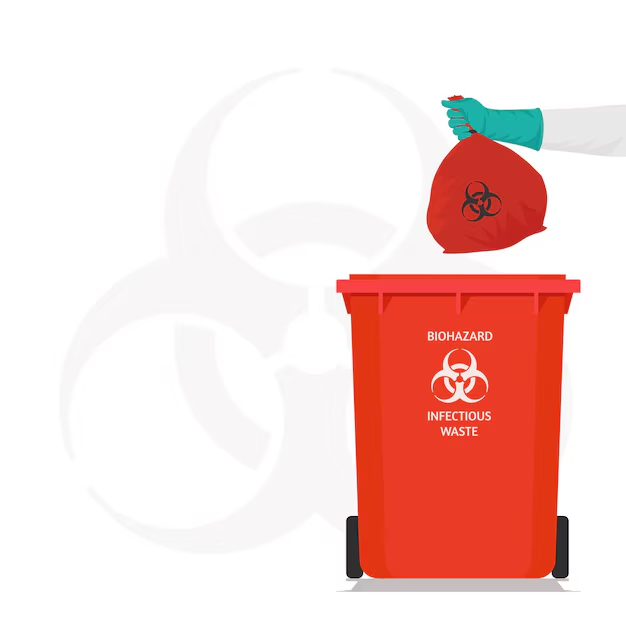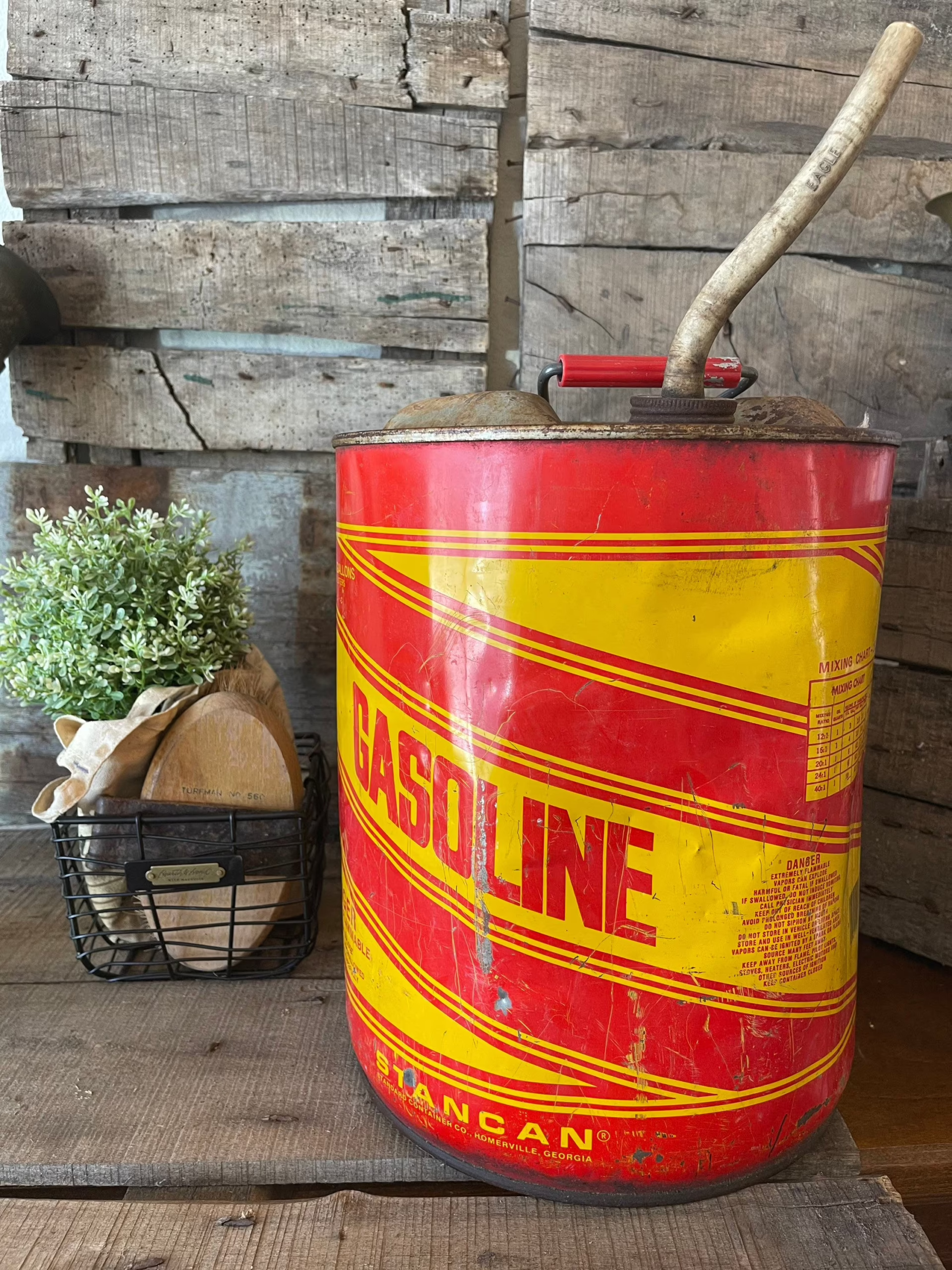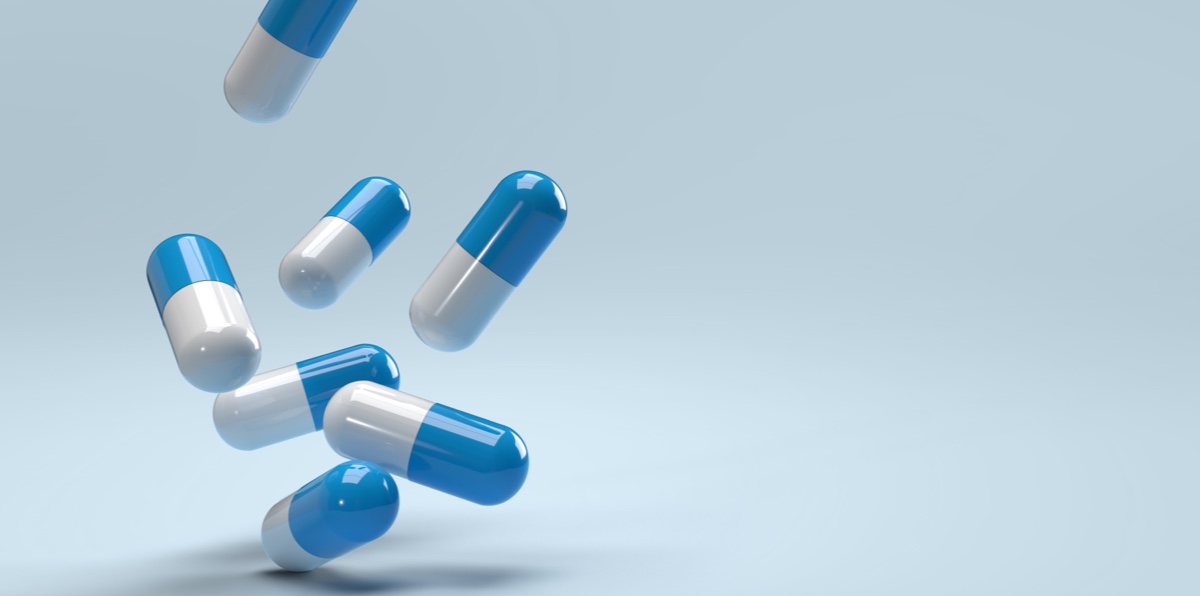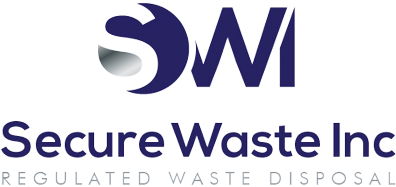What is Red Bag Waste?
Red Bag waste is classified as biohazardous waste. It includes liquid or solid items contaminated with blood or other potentially infectious materials (OPIMs). It is essential to line a biohazard bin with a red bag.
What items belong in red biohazard bags? Knowing what constitutes red bag waste is essential to ensure proper disposal and safety. Here are some key examples of materials that should always be placed in these bags:
Biomedical Waste Disposal For Red Bag Waste “Click Here”
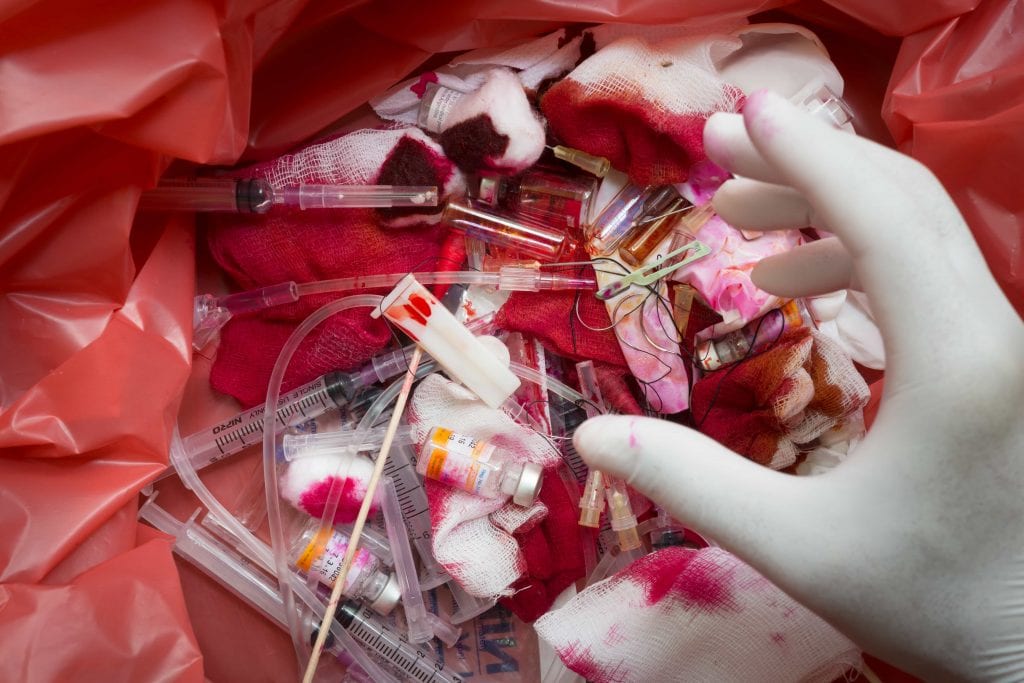
Personal protective equipment (PPE) is essential for safety, especially when it has been in contact with blood or potentially infectious materials. This includes valuable items like gauze, gloves, gowns, bandages, and dressings that help protect us. We must also be mindful of blood products, including blood tubes, released blood, empty vials, and visibly contaminated body fluids such as urine, vomit, etc.
Disposing used needles, scalpel blades, and syringes safely in sealed sharps containers is crucial. Also, remember to keep pathological specimens and microbiological waste—like human tissues and organs—separate and clearly labeled for effective management. By following these guidelines, we ensure a safer environment for everyone!
What Items Should You Keep Out of the Red Bag?
Did you know 75% to 85% of hospital waste is non-hazardous? This means food wrappers, paper towels, and food scraps can be responsibly disposed of in regular trash, recycling, or compost bins! It’s essential, though, to keep regulated medical waste separate. Hazardous materials like pharmaceutical waste and sharps need specific containers for safe disposal. We can all contribute to a healthier environment and a more sustainable future by following these guidelines!
Sharps Waste: Sharps waste is classified as biohazardous and requires special attention. It is essential never to place sharps directly into a red bag, as they can easily pierce through it, posing serious risks to waste handlers. Following these precautions can help create a safer working environment for everyone involved. Let’s prioritize safety and proper waste management together! Needlestick injuries are a primary transmitter of bloodborne pathogens, so all sharps must be placed into an approved, sealed, puncture-proof container before being disposed of in red bags and biohazard bins.
Pharmaceutical Waste: It’s essential to understand that biohazard red bags and pharmaceutical waste have unique risks that require careful handling and treatment. Pharmaceutical waste, for instance, must be safely incinerated and should be placed in designated blue and white containers. Thoughtful separation of these waste types not only ensures compliance but also protects our environment from potential contamination.
Chemotherapy Waste: Waste that contains trace amounts of chemotherapy drugs can pose risks to healthcare staff. By diligently keeping red bag waste distinct from chemotherapy waste, we can significantly reduce exposure to harmful substances and ensure that all waste is treated and disposed of safely. Clear labeling on medical waste containers according to waste type further enhances safety and minimizes the chance of accidents.
Essential Tips for Handling Red Bag Waste: Your Guide to Responsible Waste Management
When managing red bag waste, handling it effectively and safely is crucial. Here’s a friendly guide to help you navigate the process with confidence:
- Know What Goes in the Red Bag: Only dispose of biohazardous or potentially infectious materials. This helps keep everyone safe and ensures proper treatment.
- Seal Up Tight: Securely close each red bag to prevent leaks or spills. A tight seal is essential for maintaining a safe environment.
- Use Proper Disposal Containers: Always place red bags in designated waste containers specifically for biomedical waste. This keeps the waste contained and minimizes risk.
- Follow Local Regulations: Familiarize yourself with local waste disposal regulations. Each location may have specific guidelines for handling and disposing of red bag waste.
- Stay Informed and Educated: Regularly participate in training sessions or refreshers on waste management practices. Knowledge is key to safe handling!
The Importance of Proper Regulated Medical Waste Disposal
Managing biohazardous waste, marked by bright red bags, is crucial due to its potential health and environmental risks. For healthcare facilities, proper segregation and disposal ensure the safety of staff and patients and help control costs. The biohazard symbol on these bags serves as a reminder of the care required in handling such materials.
Regulated medical waste must never be mixed with regular trash to prevent biohazards from contaminating landfills, posing risks to the environment and waste workers. Treatment methods include microwave, autoclaving, or incineration sterilization, which are necessary to decontaminate these materials properly.
Misclassifying medical waste can increase costs, fines, and injuries, making it vital for clinic staff to understand the types of waste generated. By cultivating awareness and compliance with disposal practices, we can enhance safety, meet regulations, and improve waste management efficiency. Together, we can positively impact safety and sustainability!
Red Bag Key Takeaways:
In closing, if you don’t mind, you can contact Secure Waste for a Biomedical waste quote for Red Bag Disposal. We provide reliable, compliant, eco-friendly Biomedical waste disposal solutions for your facility’s needs. We have expertise in biomedical, hazardous waste, and Sharps container disposal. In addition, we provide customized waste management plans, including secure collection and transport and sustainable disposal practices.
Contact us today for a FREE Waste Assessment, or request a quote online!
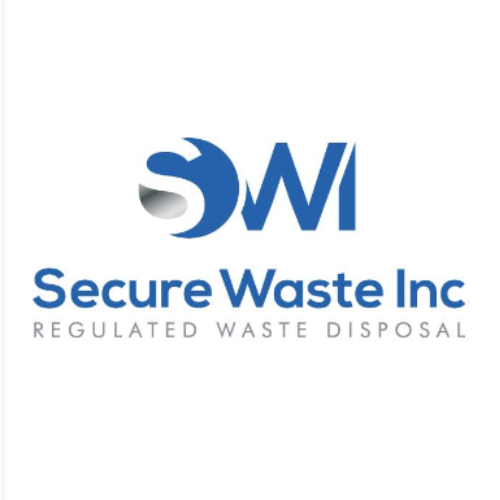
Expert Medical Waste Management: With over 25 years of industry experience, Secure Waste is a trusted local leader in hazardous and biohazardous waste disposal across Maryland, Virginia, and Washington, D.C. Specializing in medical waste management, sharps needle disposal, and biohazard waste removal, the company ensures full compliance with federal, state, and local regulations while prioritizing environmental sustainability.
The company also offers additional services, including secure document shredding and sharps container sales, providing comprehensive solutions for healthcare facilities and businesses. Our cost-effective services help clients maintain regulatory compliance without unexpected costs.
With a commitment to customer satisfaction, Secure Waste offers tailored waste management plans that align with industry best practices. Their team of experts provides reliable, timely, and compliant services, making them the preferred choice for medical waste disposal. For a free waste quote or more information, visit www.securewaste.net
